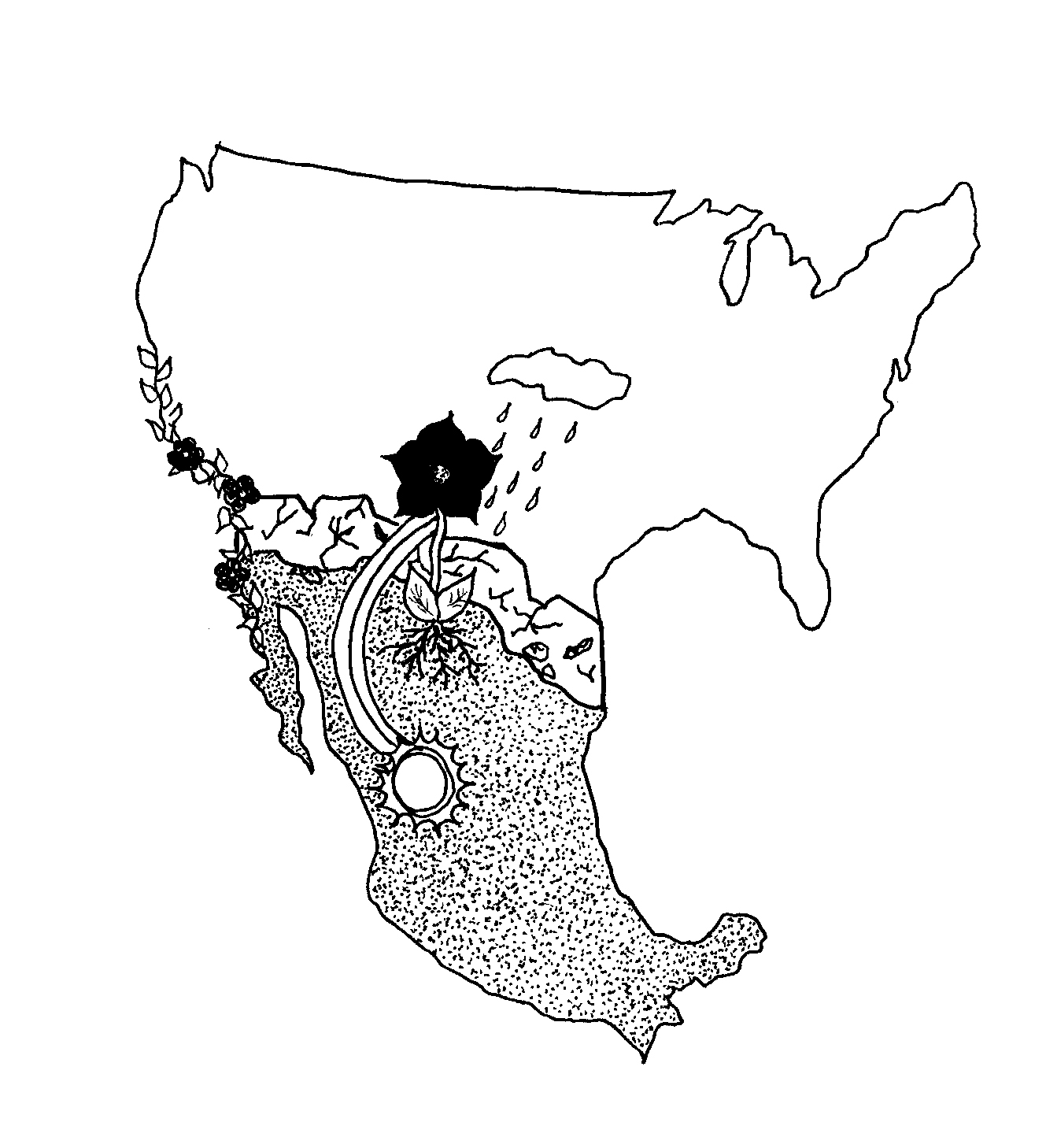Breaking down the wall
April 19, 2019
 This
piece represents the opinion of the author
.
This
piece represents the opinion of the author
.
“Trump es malo.” “Trump is bad,” a middle-aged woman tells me while she measures flour. I’m in an aisle of the central market in Merida, Mexico on a Sunday, speaking with the woman who sold me cinnamon and cloves. After asking if I am from the U.S., she starts to talk about our president. “They should take a stick to him,” she says, motioning as if with a baseball bat. Another woman, the next-door vendor, chimes in: “I want to poison him.” The spice woman asks if Obama did a good job as president, wondering if problems like family separation existed before, too. She shakes her head disapprovingly.
“Me atienden mejor.” “They attend to me better,” explains my friend from the university. She says when she’s with one of her güerita friends (white foreigners like me), she is treated kindlier and served more quickly in stores and restaurants. Racism within Mexico means foreign white tourists receive better treatment than many people born here—especially if they have indigenous-resembling characteristics. She goes on to comment on the hierarchy of languages that exists here: English, Spanish, Maya. She laughs at the question another exchange student asked: “Why does everyone wear t-shirts with sayings in English?” For people here, American culture is normal, popular and even a status symbol.
“Sabía que cruzar a traves de México era demasiado peligroso.” “She knew crossing through Mexico was too dangerous.” Another student tells me about an acquaintance of hers who emigrated illegally to the US by taking a jet ski from the coast of the Yucatán to Miami. That woman preferred to risk her life on a 675-mile boat ride rather than endure the potential violence that haunts the over-land that journey so many other immigrants make. And to her, that migration was worth the risk. The same student then ironically shows me an article about a couple from the US—“construyen su propio muro,” it says; they built a nine-foot-tall wall around their house and the adjacent beach. Fortunately, construction was stopped, seeing as it’s illegal to fence beach property, which belongs to the government.
“No hay ser humano illegal.” “There is no illegal human being,” lectures my professor of the philosophy of culture. We are talking about what universal elements all cultures might share, what all humans have in common. He says everyone has a right to be treated with dignity, like human beings—even when different cultures come in contact. He says, in an obvious critique of current policies, that when people cross the border, both cultures must recognize that the migrants are still humans; they have rights.
These conversations crop up in my other classes too. In my literature class, students presenting on Octavio Paz’s meditations on Mexican identity list a poetic set of characteristics of Mexicans. They write, “somos los que cruzaron el muro y los que cruzaron el mar:” “we are those who crossed the wall and those who crossed the sea.” In my anthropology class, we talk about chain migration to the U.S., about Mexican immigrants creating their own Little Mexicos in North American cities. Another time we discuss historical events that are seared into our brains—the ones for which we can still picture the moment we got the news. My anthropology professor lists first some elections in Mexico, then Pinochet’s coup, Franco’s death, the attack on the Twin Towers and the election of Trump. Ask most adults in the U.S., and chances are they couldn’t even name an important election in Mexico.
These anecdotes might seem jumbled, but they all tell the story of a people whose daily lives are affected by the policy, culture and economy we take for granted. In the conversations around fear and an “invasion” of Latin American immigrants, around pending border closures and reduced aid, we forget that these countries are living under the political shadow of our own. Impacts from our culture are deeper and more widespread than we would ever know without leaving the U.S.. In comparison, coming to the U.S. feels like a common conversation here: two of my friends are, as we speak, in the midst of the U.S. visa process.
People here have a much better sense of U.S. politics, music, television, history and economy than we North Americans tend to have of theirs. They sing along with songs in English and probably know the names of our last three presidents and the relative strength of the peso to the dollar. (This principle is not always true, of course. Some of them didn’t think de facto segregation still exists in the U.S.) In some ways, I have learned more about my own culture and country than the ones I am visiting. Unfortunately, what I learn does not always make me proud.
The relationship between the U.S. and Mexico is not as simple as NAFTA, the drug war or immigration. To even begin to comprehend it, we must understand cultural appropriation, assimilation, diffusion and adaptation. We must evaluate racism, human rights, cultural autonomy and identity. This “must” is not figurative, not conditional, not exaggerated. There is a record number of immigrants in custody and pleading amnesty. Their futures—and possibly lives—are in the balance. This is a state of emergency, but the solution is not building walls; it is breaking them down.
Anna Martens is a member of the Class of 2020.


Comments
Before submitting a comment, please review our comment policy. Some key points from the policy: